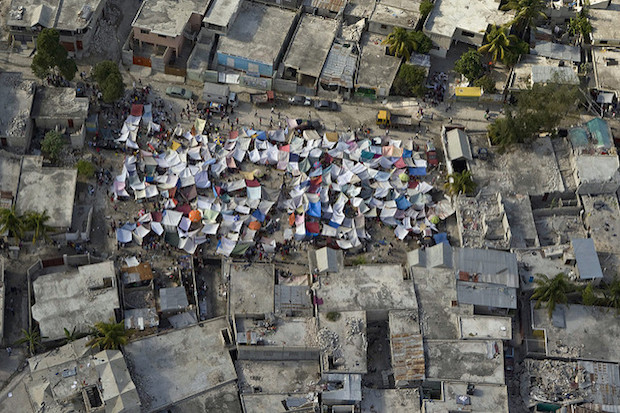
Haitians set up impromtu tent cities thorough the capital after an earthquake measuring 7 plus on the Richter scale rocked Port au Prince Haiti just before 5 pm yesterday, January 12, 2009.
User-generated content can provide a useful source of information during humanitarian crises like armed conflict or natural disasters. With the rise of interactive websites, social media, and online mapping tools, volunteer crisis mappers are now able to compile geographic data as a humanitarian crisis unfolds, allowing individuals across the world to organise as ad hoc groups to participate in data collection. Crisis mappers have created maps of earthquake damage and trapped victims, analysed satellite imagery for signs of armed conflict, and cleaned Twitter data sets to uncover useful information about unfolding extreme weather events like typhoons. Although these volunteers provide useful technical assistance to humanitarian efforts (e.g. when maps and records don’t exist or are lost), their lack of affiliation with “formal” actors, such as the United Nations, and the very fact that they are volunteers, makes them a dubious data source. Indeed, concerns have been raised about the quality of amateur mapping and data efforts, and the uses to which they are put. Most of these concerns assume that volunteers have no professional training. And herein lies the contradiction: by doing the work for free and at their own will the volunteers make these efforts possible and innovative, but this is also why crisis mapping is doubted and questioned by experts. By investigating crisis-mapping volunteers and organisations, Elizabeth Resor’s article “The Neo-Humanitarians: Assessing the Credibility of Organised Volunteer Crisis Mappers” published in Policy & Internet presents evidence of a more professional cadre of volunteers and a means to distinguish between different types of volunteer organisations. Given these organisations now play an increasingly integrated role in humanitarian responses, it’s crucial that their differences are understood and that concerns about the volunteers are answered. We caught up with Elizabeth to discuss her findings: Ed.: We have seen from Citizen Science (and Wikipedia) that large crowds of non-professional volunteers can produce work of incredible value, if projects are set up right. Are…
